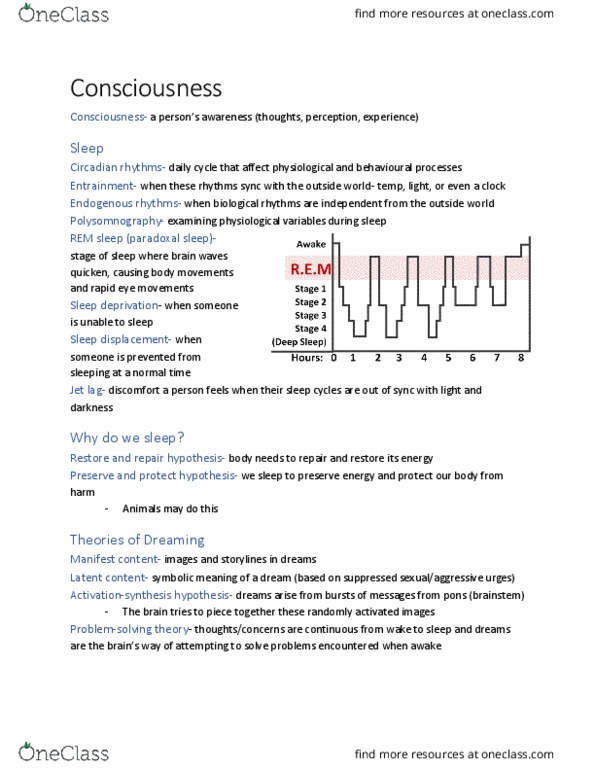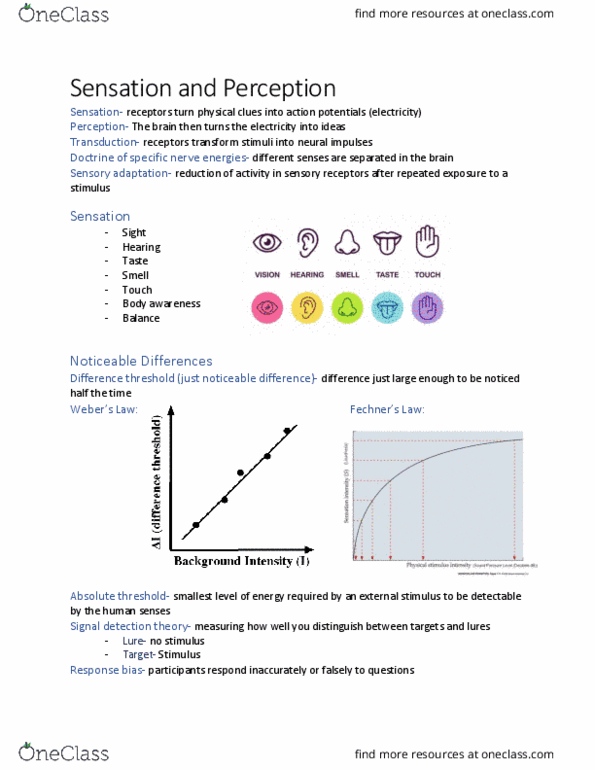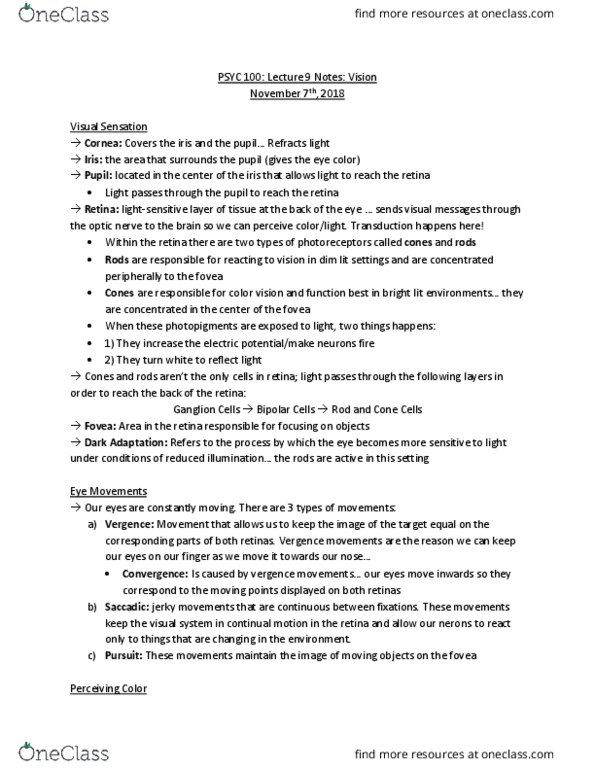PSYC 100 Lecture Notes - Lecture 8: Detection Theory, Absolute Threshold, Response Bias
PSYC 100 verified notes
8/12View all
Document Summary
Sensation- receptors turn physical clues into action potentials (electricity) Perception- the brain then turns the electricity into ideas. Doctrine of specific nerve energies- different senses are separated in the brain. Sensory adaptation- reduction of activity in sensory receptors after repeated exposure to a stimulus. Difference threshold (just noticeable difference)- difference just large enough to be noticed half the time. Absolute threshold- smallest level of energy required by an external stimulus to be detectable by the human senses. Signal detection theory- measuring how well you distinguish between targets and lures. Response bias- participants respond inaccurately or falsely to questions. Population code- neural signalling using large populations of imprecise neurons. Temporal code-relies on precise timing of action potentials. Place code- action potential relies on position of stimulus. Multisensory code- how information from the different senses may be integrated by the nervous system. Study of how we interpret sensory input.




